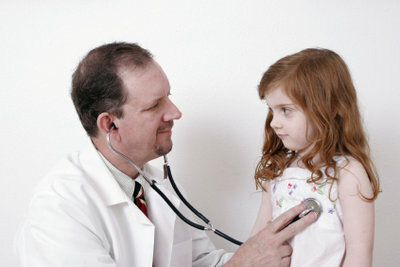"Where is the heart?"
The heart, the seat of the soul and conscience, is one of the most important organs, which, with its rhythmic beat, provides the life force of humans and animals. Where exactly is the heart located? What is the function of the heart?

The heart is in the right place
- The heart (cor) a fist-sized and muscular hollow body, is located between the third, right rib. In fact, the heart lies behind the breastbone.
- The larger half of the heart is about two centimeters away from the center of the sternum left rib cage, while one third of the smaller half of the heart is placed in the right rib cage protrudes.
- The heart is widened towards the bottom. The lower border of the heart is widened and is about six inches to the left of the base of the sixth rib on the sternum.
- You can usually feel the impulse of the heart to the left under the fifth space between the ribs.
- Most of the heart, which resembles a tube, is made up of muscles.
- The heart divides, perpendicular to the middle of the body, into the left and right halves of the heart, each with a chamber and atrium, as well as two heart valves each. Both halves of the heart are separated from each other by the cardiac septum.
- The right atrium is in the upper right and is separated from the right ventricle by the tricuspid valve (right) and the pulmonary valve (left).
- The left atrium is in the upper left and is separated from the left ventricle by the aortic valve (right) and the mitral valve (left).
- The valves, which open according to the direction of blood flow, are also called leaflet valves.
It is the most important organ in the human body. But which side is that ...
Structure of the heart
- The structure of the heart is basically similar to that of the blood vessels. The heart is lined with the inner lining of the heart (endocardium), the cardiac muscle layer (myocardium) and the outer skin of the heart (pericardium and epicardium).
- The inner lining of the heart consists of squamous epithelium on which a thin layer of connective tissue rests. The heart valves, reinforced by tendon-like fibreboards, also consist of the inner lining of the heart.
- The outer skin of the heart (epicardium) and the pericardium (pericardium) cover the surface of the heart. The heart is therefore protected in the pericardium. Viewed from the outside in, the pericardium borders on the side facing the heart, which is provided with a smooth cover layer, on the smooth surface of the outer skin of the heart.
- So that there is no friction between the two layers when the heart is pumping, the space in between is lined with a layer of fluid. Think of it like oil lubrication on an engine. Without the layer of fluid, the heart would overheat.
- The heart muscle layer is the main layer of the heart and is made up of muscle tissue.
The function of the heart
- The main task of the heart is the blood circulation by means of pumping in the body keep going.
- The heart has its own conduction system, but works independently.
- At rest, the heart of a healthy adult beats about 70 times a minute. The blood, enriched with carbon and degradation products, which comes from the veins, is pumped into the lungs. The oxygen-enriched blood in the lungs flows back into the body through the arteries on the way back and is transported to the organs and cells. In the lungs, the blood is cleaned by the pulmonary circulation, to put it simply.
- The rhythmic excitation of the heart comes from an impulse from the one in the right atrium Sinus nodes spread out over the entire heart, thus causing the number of beats per Minute.
- Depending on the load and physical condition, a heart can beat up to 200 beats per minute. As a comparison, the heartbeat of a small mouse is over 1300 beats per minute.
- The heart contracts with every beat (contraction - systole), takes a short break and relaxes (diastole) and then contracts again.
- The heartbeat, the heartbeat, the heart tones and the conduction of excitation, which are measured via an EKG (electrocardiogram), are proof of the heart's activity.
How helpful do you find this article?
The content of the pages of www.helpster.de was created with the greatest care and to the best of our knowledge and belief. However, no guarantee can be given for the correctness and completeness. For this reason, any liability for possible damage in connection with the use of the information offered is excluded. Information and articles must under no circumstances be viewed as a substitute for professional advice and / or treatment by trained and recognized doctors. The content of www.helpster.de cannot and must not be used to make independent diagnoses or to start treatments.
